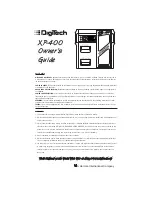
© 1999 T
EXAS
I
NSTRUMENTS
I
NCORPORATED
TI-30X
Ù
S: A Guide for Teachers
18
Heart Rates — 1-Variable Statistics
(Continued)
4. Check the statistics calculations. After
students display
Ò
x
(Sigma
x
), explain that
Ò
x
is the sum of all the heart rates. Ask students:
•
How many heartbeats were there in one
minute?
•
Is the average heart rate higher or lower
than you expected?
5. Now we will see the effect of some exercise
on heart rate. Tell students:
If at any point during this portion of the
activity you experience pain, weakness, or
shortness of breath, stop immediately.
6. Have the students run in place for 2 minutes
and then give them these instructions:
a
. Time your pulse for 1 minute.
b.
Record your heart rate as before.
c.
Enter the data into the calculator.
d.
Compare the average heart rate after
running with the resting heart rate.
1. Press
u
.
n
Ï
Sx
Î
x
22.
n should equal the total
number of student sampled.
2. Press
"
to
Ï
to see the
average heart rate.
n
Ï
Sx
Î
x
62.
3. Press
"
"
"
to
Ò
x
.
Ò
x
Ò
x
2
1370.
Note: The numbers show the
results of the example described
above. Your students’ results will
vary depending on the size of
group and the heart rate readings.
7. Now have the students do jumping jacks for 2
minutes. Instruct them to time their pulse for 1
minute again and record as before. Have them
enter the data into the calculator again and
calculate the average heart rate after jumping
jacks. Compare to the other 2 averages.
8 How fit is the class? If the class (or individual)
heart rate after jumping jacks is less than 90,
then you are in great shape. If it is higher than
125, then you are in poor shape.
9.
Instruct students to make a histogram of the 3
sets of data they collected. Ask students:
•
How are the histograms the same?
•
How are they different?
•
Is the data grouped the same or is it more
spread out in one graph compared to
another?















































